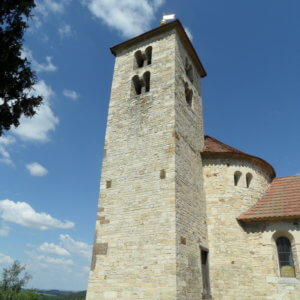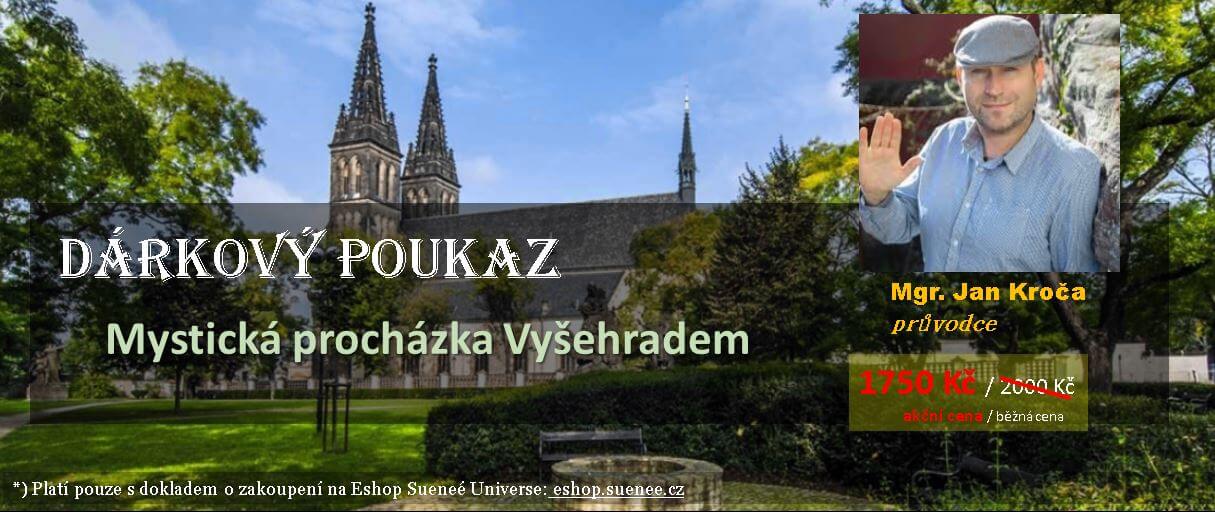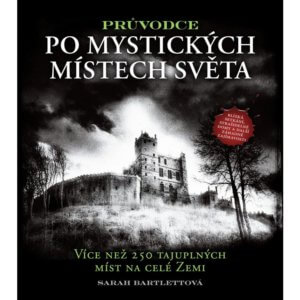 1
1

Great pyramid in Cholla
 17. 04. 2024
17. 04. 2024



 1
1

 17. 04. 2024
17. 04. 2024
 6
6

 16. 04. 2024
16. 04. 2024
 8
8

 15. 04. 2024
15. 04. 2024
 1
1

 04. 07. 2019
04. 07. 2019

The chapels of Mary Magdalene were built by our ancestors in places of power, usually with an old pagan tradition. Most of these buildings, often of Romanesque or Gothic origin, can be found in Prague and its surroundings. It seems that the cult of a saint, called Mary in Old Czech, had the task of suppressing memories of Slavic priestesses and their ceremonies.
Mysterious rotunda at Václav Havel Airport
 Apparently, the oldest shrine dedicated to Mary Magdalene can be found in Přední Kopanina, which is now part of the capital city of Prague, and its co-existence includes noisy starting planes from the nearby Václav Havel Airport. According to legend, the wooden chapel was to be founded by Saint Ludmila, the mother of st. Wenceslas, sometimes around 900, when the oldest Czech church was built at the nearby Budeč hillfort. Today's rotunda in Přední Kopanina is Romanesque and comes from 13. century, was very successfully reconstructed and completed in the nineteenth century. The white opuka, thanks to which the rotunda in Kopanina shines into the distance, comes from the same quarry as the monastery of st. George at Prague Castle. The rays of the setting sun then both these marble churches can turn into different shades of gold, which is very impressive. Mary Magdalene, however, has always been dedicated to the color red. Perhaps it is no coincidence that on the hill northeast of the rotunda in Kopanina, a ghost of the Virgin Mary appeared in red robes, in a place that seems to have an older pagan past. To the statue of Saint Julian at the intersection of the old ways down here to 19. There were pilgrimages in the middle of the century, with young girls bringing red roses. It is said that on the hill and down in the place of the rotunda there were originally the sacred groves of the Slavic goddess Živa or Krasina, whose symbol used to be the flowers of red and red shades.
Apparently, the oldest shrine dedicated to Mary Magdalene can be found in Přední Kopanina, which is now part of the capital city of Prague, and its co-existence includes noisy starting planes from the nearby Václav Havel Airport. According to legend, the wooden chapel was to be founded by Saint Ludmila, the mother of st. Wenceslas, sometimes around 900, when the oldest Czech church was built at the nearby Budeč hillfort. Today's rotunda in Přední Kopanina is Romanesque and comes from 13. century, was very successfully reconstructed and completed in the nineteenth century. The white opuka, thanks to which the rotunda in Kopanina shines into the distance, comes from the same quarry as the monastery of st. George at Prague Castle. The rays of the setting sun then both these marble churches can turn into different shades of gold, which is very impressive. Mary Magdalene, however, has always been dedicated to the color red. Perhaps it is no coincidence that on the hill northeast of the rotunda in Kopanina, a ghost of the Virgin Mary appeared in red robes, in a place that seems to have an older pagan past. To the statue of Saint Julian at the intersection of the old ways down here to 19. There were pilgrimages in the middle of the century, with young girls bringing red roses. It is said that on the hill and down in the place of the rotunda there were originally the sacred groves of the Slavic goddess Živa or Krasina, whose symbol used to be the flowers of red and red shades.
Chapel of Mary Magdalene on Vršovický Square
The first stone shrine of Mary Magdalene in Prague and its surroundings is a mysterious rectangular chapel in Prague's Vršovice. It is documented in writing in 1022, but it will probably have an even longer history. She too grew up in an extraordinary place - at the sacred grove of the Vršovci priestly family, who guarded the entrance to the Botič valley with the pagan shrines Jezerka, Slupí and Vyšehrad. For believers of the Old Slavic faith, Mary Magdalene seems to have been the "most digestible" part of Christianity. The Vršovice Chapel of Mary Magdalene is today a little-known part of the local Baroque church of St. St. Nicholas, was located in the place of today's presbytery, which still retains a rectangular floor plan.
From the year 1030 we have documented the chapel of Mary Magdalene in nearby Vyšehrad. It has not been preserved to this day, but its existence confirms the hypothesis that in this part of today's Prague, Mary Magdalene was worshiped as a substitute for the pagan Libuše, associated with the local sacred area Na Jezerce.
Chapel of Corpus Christi on Charles Square
The cult of Mary Magdalene reached its peak in Bohemia and Western Europe in the 14th century - and is probably related to the stays of Emperor Charles IV. and his archbishop Arnošt of Pardubice in southern France, mainly in Avignon, where the legends of Mary Magdalene were very much alive. In 1358, they even dedicated one of the cathedral chapels of the St. Vitus Cathedral to this saint, and Magdalene motifs also appear in the chapel of St. Crosses in Karlštejn in the southwest window niche. The remains of Mary Magdalene were then brought by Emperor Charles IV. from France to Prague in 1365 and places them among the other rarest relics of the world at the time in the Chapel of the Corpus Christi on the Cattle Market, today's Charles Square. Today we can no longer determine to what extent Emperor Charles and his spiritual adviser Arnošt believed in official church legends, and to what extent they were influenced by the "heretical" ideas of the then southern French Gnostics. They considered Mary Magdalene to be the embodiment of Pistis Sofia, ie spiritual wisdom, accessible only to the initiates.
Kunice u Říčan
Another ancient church, dedicated to Mary Magdalene, still stands in the village of Kunice on the ancient trade route from southern Bohemia to Prague, which was probably already used by the Celts. The original wooden chapel was to be built as early as 970, although later reconstructions, especially the Baroque one, left no traces of it. However, the ancient consecration of the church remained and reveals that the saint Mary Magdalene was very popular in Bohemia at the dawn of Christianity.
Healing castle Okor
Another originally Romanesque sanctuary, dedicated to Mary Magdalene, can be found at Okoř Castle west of Prague, just a few kilometers from the aforementioned Přední Kopanina. The local chapel was created in 13. After the Gothic reconstruction, it served the inhabitants of the area until 1800, when its vault collapsed due to neglected maintenance. The remains of the local castle chapel are still visible on the ground floor of the tall tower. The place is still very positive energy, suitable for meditation or healing. And by the way, according to rumors, the popular White Lady did not scare the Okoř, but the female ghost in the red robe. Again, we encounter this color, which is related to the fertility attributes and is so typical of the cult of Mary Magdalene.
Skalka u Dobris
The last place near Prague, where we look in the footsteps of Mary Magdalene, is the chapel of the same consecration on Skalka near Dobříš. The sanctuary has stood on a strong energy zone here for a long time, but the Christian chapel and the Stations of the Cross date back to the Baroque period, when the cult of Mary Magdalene returned to fashion. This time, however, she is no longer presented as the mystical wife of Christ, but as a humble penitent, which is a fundamental shift in the original meaning. The Baroque reveled in similar paintings the conversion to the "right" path of faith and austerity. In contrast, contemporary spiritual currents tend to follow the original archetype of Mary Magdalene as a representative of a higher level of love and wisdom, connected with the energy of the Grail and the sacred connection of man and woman.
Gift Voucher
Sueneé: Jan Kroča is a great guide to mystical and magical places in the Czech and Slovak Republics. We offer you a unique opportunity to take advantage of the following voucher for a walk with him after Vyšehrad. Voucher you can buy in our eshop.

BUY: Jan Kroča: A Mystical Walk through Vyšehrad
If you are interested in other interesting places, be inspired.
